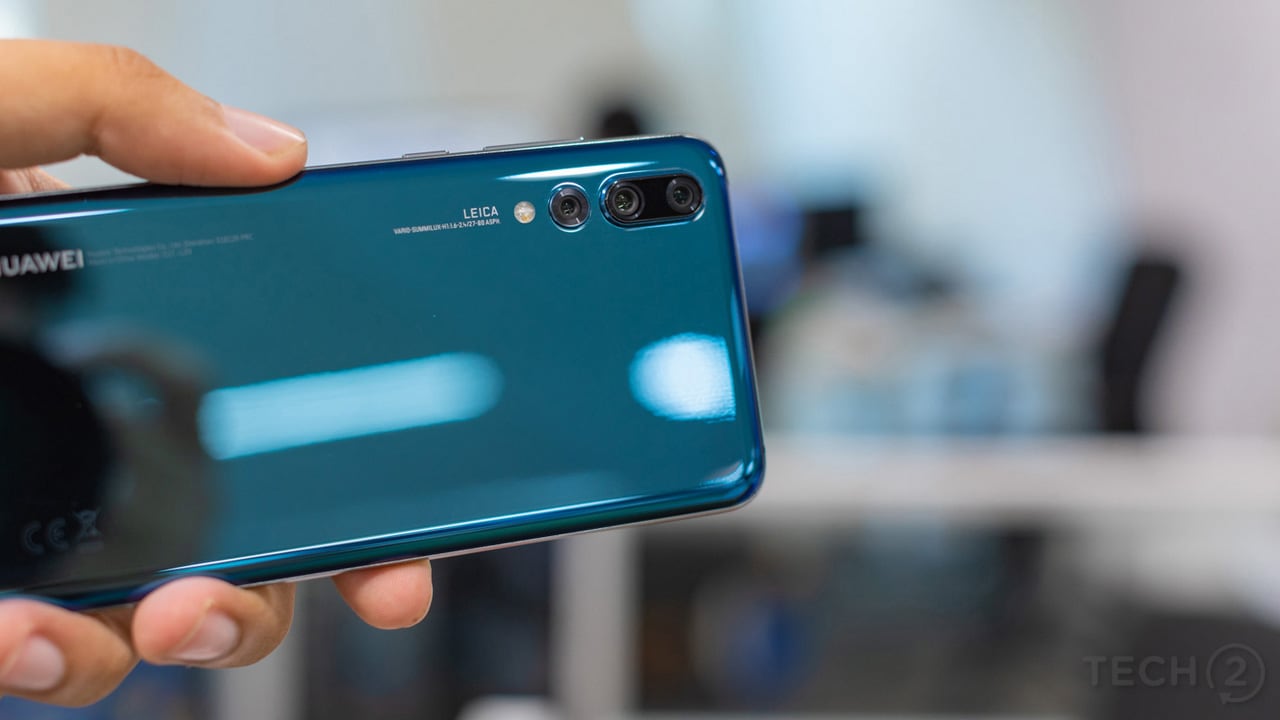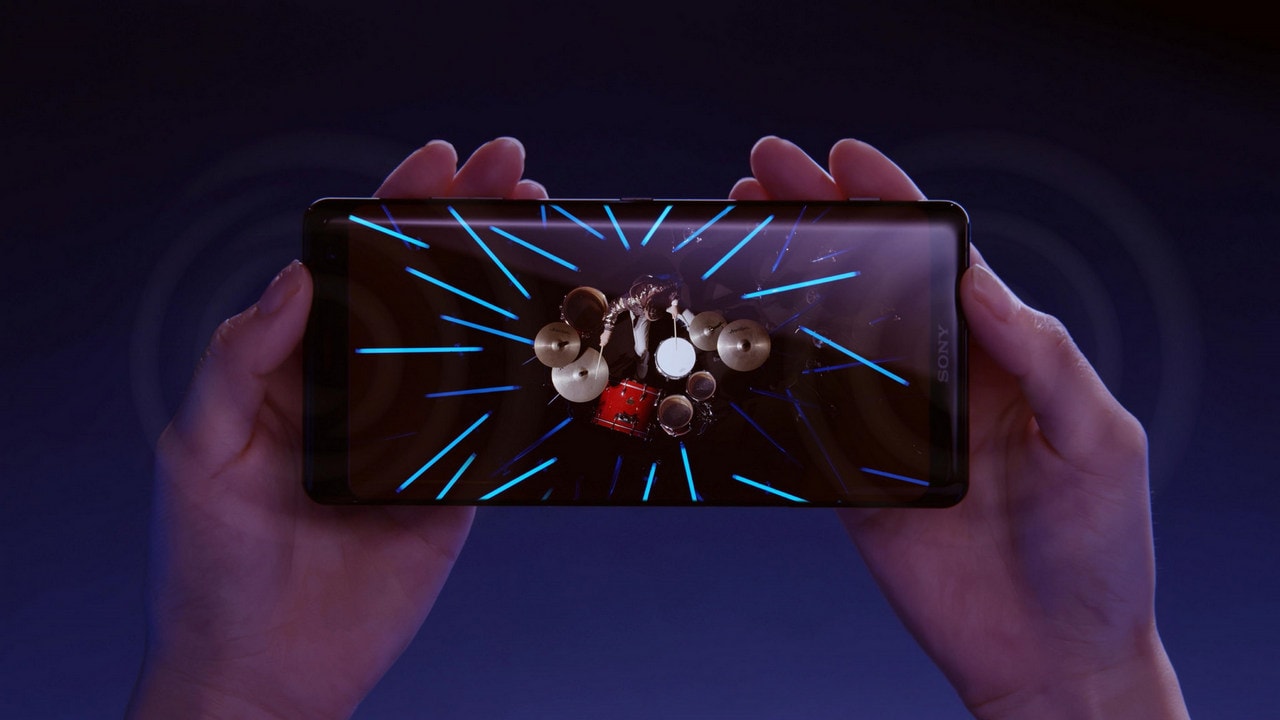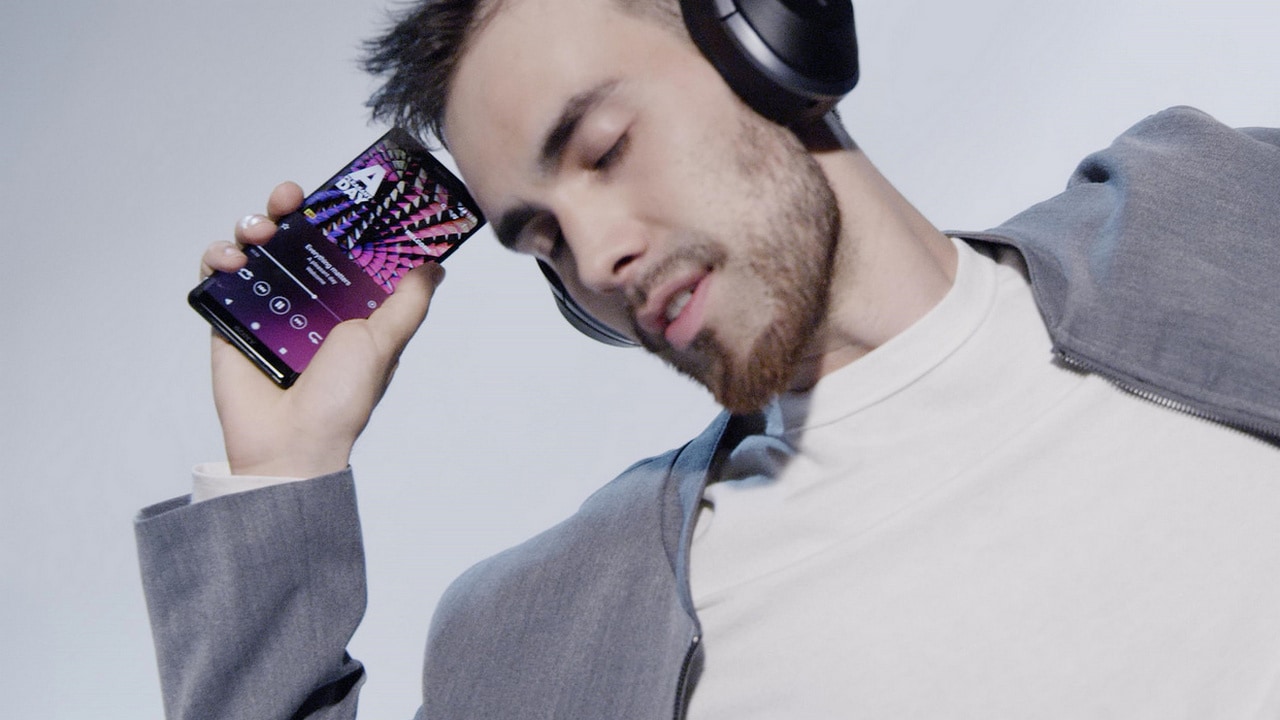Sony just unveiled its latest flagship offering at IFA 2018, the
**Xperia XZ3** and while we did expect a lot of things from it, the on-paper specifications of the phone suggest that it isn’t really that much of an upgrade from last year’s XZ2. There are a few changes though and the most notable of them all is the display. The Xperia XZ3 offers a larger 6-inch (up from 5.7-inch) OLED display with a QHD+ resolution (2880 x 1440) and an 18:9 aspect ratio. The battery has been bumped up too, from 3,180 mAh up to 3,330 mAh on the XZ3 and the phone also comes with Android Pie out of the box. [caption id=“attachment_5087381” align=“alignnone” width=“1024”] The Sony Xperia XZ3. Image: Sony Mobile[/caption] On the inside, we have a Qualcomm Snapdragon 845 chipset along with 4 GB of RAM and 64 GB of storage. I’m not quite sure why Sony is still stuck up on offering just 4 GB of RAM when even budget smartphones offer more these day, but, unfortunately, that’s what you are stuck with. However, the storage is thankfully expandable, all the way up to 512 GB. Sony has also tweaked the front camera on XZ3 which is now a 13 MP f/1.9 sensor which has few neat tricks up its sleeve when it comes to 3D face-scanning. All this for a price of $900 does sound quite a steep price to pay, but considering Sony still sees itself as a Samsung competitor, it does try and match up to the might of the
**Galaxy Note 9** even though it doesn’t really offer as many extras like the Note. To brings things into better perspective, we also introduce the Huawei P20 Pro which still offers great cameras and also the cheaper but equally poised
**LG G7+ ThinQ** .
| Smartphone | Sony Xperia XZ3 | Samsung Galaxy Note 9 | Huawei P20 Pro | LG G7+ ThinQ |
|---|---|---|---|---|
| Display Size (inch) | 6 | 6.4 | 6.1 | 6.1 |
| Resolution (pixels) | 2880 x 1440 | 1440 x 2960 | 1,080 x 2,244 | 1440 x 3120 |
| Pixel Density (PPI) | 537 | 516 | 408 | 564 |
| Display Type | pOLED | Super AMOLED | AMOLED | IPS LCD |
| Dimensions(mm) | 158 x 73 x 9.9 | 161.9 x 76.4 x 8.8 | 155 x 73.9 x 7.8 | 153.2 x 71.9 x 7.9 |
| Weight (g) | 193 | 201 | 180 | 162 |
| Dual SIM | Yes | Yes | Yes | Yes, hybrid |
| SIM Type | Nano-SIM | Nano-SIM | Nano-SIM | Nano-SIM |
| Connectivity Types | GSM / HSPA / LTE | GSM / HSPA / LTE | GSM / HSPA / LTE | GSM / HSPA / LTE |
| Processor | Qualcomm Snapdragon 845 | Exynos 9810 | Hisilicon Kirin 970 | Qualcomm Snapdragon 845 |
| CPU Cores | Octa-core | Octa-core | Octa-core | Octa-core |
| CPU Clock Speed (GHz) | 4x Kryo 385 Gold @ 2.7 GHz & 4x Kryo 385 Silver @ 1.7 GHz | 4x2.7 GHz Mongoose M3 & 4x1.8 GHz Cortex-A55 | 4x Cortex-A73 @ 2.4 GHz & 4x Cortex-A53 @1.8 GHz | 4x Kryo 385 Gold @2.8 GHz & 4x Kryo 385 Silver @1.7 GHz |
| GPU | Adreno 630 | Mali G72 MP18 | Mali-G72 MP12 | Adreno 630 |
| RAM (GB) | 4 | 6, 8 | 6 | 6 |
| Ruggedness | IP68 | IP68 | – | IP 68 |
| On-Board Memory (GB) | 64 | 128, 512 | 128 | 128 |
| Expandable Memory | Yes, upto 512 GB | Yes, upto 512 GB | Yes, up to 256 GB | Yes, up to 512 GB |
| Sensors | Fingerprint (rear-mounted), accelerometer, gyro, proximity, barometer, compass, color spectrum | Iris scanner, fingerprint (rear-mounted), accelerometer, gyro, proximity, compass, barometer, heart rate, SpO2 | Fingerprint Reader, Gravity Proximity, Accelerometer, Gyroscope, Proximity, Compass | Fingerprint (rear-mounted), accelerometer, gyro, proximity, compass, barometer |
| Primary Camera | 19 MP f/2.0 | 12 MP f/1.5-2.4 + 12 MP f/2.4 | 40 MP f/1.8 + 20 MP f/1.6 and 8 MP f/2.4 | 16 MP f/1.6 + 16 MP f/1.9 |
| Optical Image Stabilization | No | Yes | Yes (for 40 MP) | Yes |
| Camera Array | Single Camera | Dual Camera | Triple Camera | Dual Camera |
| Autofocus System | Laser and predictive Phase detection autofocus | Dual Pixel Phase detection autofocus | Phase detection and laser autofocus | Laser and Phase detection autofocus |
| Secondary Camera | 13 MP f/1.9 | 8 MP f/1.7 | 24 MP f/2.0 | 8MP f/1.9 |
| Video Capture | 2160p@30fps, 1080p@60fps, 1080p@30fps, 1080p@960fps | 2160p@60fps, 1080p@240fps, 720p@960fps | 4K (30fps) | 2160p@30/60fps, 1080p@30/60fps, 720p@240fps |
| Flash | LED flash | LED | dual-LED | LED |
| OS Version | Android 9.0 Pie | Android Oreo 8.1 | Android 8.1 Oreo-based EMUI 8.1 | Android 8.1 Oreo |
| AI (Smart Assistant) | Google Assistant | Yes, Bixby | Google Assistant | Google Assistant |
| GPS | Yes | Yes | Yes | Yes |
| Wi-Fi | Wi-Fi 802.11 a/b/g/n/ac, dual-band, Wi-Fi Direct, DLNA, hotspot | Wi-Fi 802.11 a/b/g/n/ac, dual-band, Wi-Fi Direct, hotspot | Wi-Fi 802.11 a/b/g/n/ac, 2.4GHz + 5GHz, Wi-Fi hotspot | Wi-Fi 802.11 a/b/g/n/ac, dual-band, Wi-Fi Direct, DLNA, hotspot |
| Bluetooth | 5.0, A2DP, aptX HD, LE | v5.0, A2DP, LE, aptX | v4.2, A2DP, LE, EDR, aptX HD | v5.0, A2DP, LE, aptX HD |
| NFC | Yes | Yes | Yes | Yes |
| Infrared | No | No | Yes | No |
| Fingerprint Scanner | Yes | Yes, Rear button | Yes, Home button | Yes, Rear button |
| 3.5 mm jack | Yes | Yes | No | Yes |
| Radio | No | Yes, FM radio | Yes, FM Radio | Yes, FM Radio |
| USB Type | Type-C reversible | Type-C reversible | Type-C reversible | Type-C Reversible |
| USB Standard | USB v3.1 | USB v3.1 | USB v3.1 | USB v3.1 |
| Battery (mAh) | 3,300 | 4,000 | 4,000 | 3,000 |
| Fast charging | QuickCharge 3.0 | QuickCharge 2.0 | Yes | Yes, QuickCharge 3.0 |
| Colors | Black, Silver White, Forest Green, Bordeaux Red | Metallic copper, Lavender purple, Ocean blue, Midnight black | Twilight, Black, Midnight Blue, Pink Gold | New Platinum Gray, New Aurora Black, New Moroccan Blue, Raspberry Rose |
| Prices in India | TBA | Rs 67,900 | Rs 64,999 | Rs 39,990 |
Performance When it comes to performance, all four phones pack the latest and greatest hardware — while the Xperia XZ3 and the G7+ ThinQ get the Qualcomm Snapdragon 845, the P20 Pro runs Huawei’s HiSilicon Kirin 970 chipset and the Note 9 runs the Samsung-made Exynos 9810 SoC. [caption id=“attachment_4901541” align=“alignnone” width=“1280”] The LG G7+ThinQ also rocks a Snapdragon 845 chip. Image: LG Newsroom[/caption] While you cannot go wrong by much with any of the offerings, the P20 Pro does lose out here given that it’s last years hardware. The Exynos chip meanwhile goes neck and neck with the Snapdragon 845 in most scenarios, but lags a bit behind when it comes to gaming. The Xperia XZ3, however, has the least amount of RAM on offer, which will likely restrict your ability to juggle between apps and games. Cameras On paper, the Xperia XZ3 is the only phone in the mix with a single lens camera module. The Note 9 has two with one having a variable aperture lens. The Huawei P20 Pro has as many as three lenses on the back. While the number of lenses in no way determines the quality of images — the Pixel 2’s camera single camera is still incredible — it does go on to two show that manufacturers are trying a lot on the hardware front to make the setup more compelling for users. [caption id=“attachment_4443521” align=“alignnone” width=“1280”]
 The triple rear camera setup is the highlight of the Huawei P20 Pro. Image: tech2/Rehan Hooda[/caption] On the video front though, the XZ3 and Note 9 are the only smartphones that can shoot 960 fps slow-motion video, though the Xperia here manages to do that at FHD resolution while the Note 9 manages only 720p footage. The Galaxy Note 9 hits right back with stabilised 4K shots at 60 fps, which only a handful of smartphones are capable of. Display Samsung and Sony make the best television displays in the world, and possibly by extension, they end up making some of the best smartphone displays as well. In this mix, the G7+ ThinQ packs in an LCD while the rest use AMOLED panels. AMOLEDs are amazing for deep blacks and fancy features like always-on displays, and Samsung makes the best AMOLEDs. Hopefully, Sony’s AMOLED is just as good and that’s something we’ll be keeping an eye out for. The G7 ThinQ uses a very pleasant IPS LCD, and given LG’s inability to produce a good enough OLED panel (the terrible Pixel 2 XL display comes to mind), this is fine. After all, LG makes the wonderful, colour-accurate LCDs on Apple’s iPhones. All the displays are incredibly sharp and pack in pixel densities far higher than those of the iPhone. [caption id=“attachment_5087391” align=“alignnone” width=“1280”]
The triple rear camera setup is the highlight of the Huawei P20 Pro. Image: tech2/Rehan Hooda[/caption] On the video front though, the XZ3 and Note 9 are the only smartphones that can shoot 960 fps slow-motion video, though the Xperia here manages to do that at FHD resolution while the Note 9 manages only 720p footage. The Galaxy Note 9 hits right back with stabilised 4K shots at 60 fps, which only a handful of smartphones are capable of. Display Samsung and Sony make the best television displays in the world, and possibly by extension, they end up making some of the best smartphone displays as well. In this mix, the G7+ ThinQ packs in an LCD while the rest use AMOLED panels. AMOLEDs are amazing for deep blacks and fancy features like always-on displays, and Samsung makes the best AMOLEDs. Hopefully, Sony’s AMOLED is just as good and that’s something we’ll be keeping an eye out for. The G7 ThinQ uses a very pleasant IPS LCD, and given LG’s inability to produce a good enough OLED panel (the terrible Pixel 2 XL display comes to mind), this is fine. After all, LG makes the wonderful, colour-accurate LCDs on Apple’s iPhones. All the displays are incredibly sharp and pack in pixel densities far higher than those of the iPhone. [caption id=“attachment_5087391” align=“alignnone” width=“1280”] The 6-inch QHD+ OLED display on the Sony Xperia XZ3. Image: Sony Mobile[/caption] Battery When it comes to battery life, the Xperia again tends to lose out to the Note 9 and the P20 Pro, which pack in 4,000 mAh units. You do get QuickCharge 3.0 support, however, which will ensure you get enough juice in roughly an hour’s charge. Software The software experience on all the four phones differs a fair bit. While none of them run stock Android, the Xperia XZ3 does come the closest in comparison, perhaps why Sony was able to announce the phone with Android P. The Galaxy Note 9 and the Huawei P20 Pro run heavily skinned versions of Android Oreo, while the G7+ ThinQ also runs a customised skin made by LG. [caption id=“attachment_5087401” align=“alignnone” width=“1280”]
The 6-inch QHD+ OLED display on the Sony Xperia XZ3. Image: Sony Mobile[/caption] Battery When it comes to battery life, the Xperia again tends to lose out to the Note 9 and the P20 Pro, which pack in 4,000 mAh units. You do get QuickCharge 3.0 support, however, which will ensure you get enough juice in roughly an hour’s charge. Software The software experience on all the four phones differs a fair bit. While none of them run stock Android, the Xperia XZ3 does come the closest in comparison, perhaps why Sony was able to announce the phone with Android P. The Galaxy Note 9 and the Huawei P20 Pro run heavily skinned versions of Android Oreo, while the G7+ ThinQ also runs a customised skin made by LG. [caption id=“attachment_5087401” align=“alignnone” width=“1280”] The Xperia XZ3 is expected to be priced around the Rs 60,000 mark when it is launched. Image: Sony Mobile[/caption] Price The Xperia XZ3 is yet to announced in India and going by the $900 price tag it comes with in the US, it certainly won’t be cheap in India. We’re hoping it will be priced at around Rs 60,000 which does position it right alongside the Note 9 and also the cheaper Galaxy S9. And even then, it remains to be seen whether the device can be competitive.
The Xperia XZ3 is expected to be priced around the Rs 60,000 mark when it is launched. Image: Sony Mobile[/caption] Price The Xperia XZ3 is yet to announced in India and going by the $900 price tag it comes with in the US, it certainly won’t be cheap in India. We’re hoping it will be priced at around Rs 60,000 which does position it right alongside the Note 9 and also the cheaper Galaxy S9. And even then, it remains to be seen whether the device can be competitive.


)
)
)
)
)
)
)
)
)



